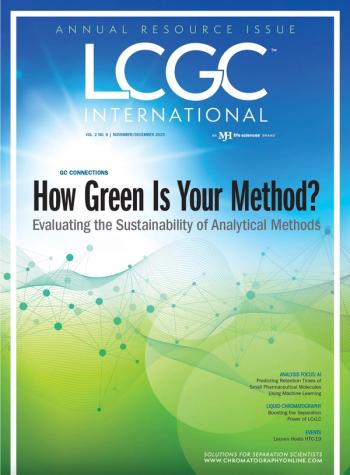
|Articles|June 1, 2004
- LCGC Europe-06-01-2004
- Volume 17
- Issue 6
Single-Compound Isotopic Analysis of Organic Materials in Archaeology
Author(s)Jennifer A. Tripp, Robert E. Hedges
Isotopic analysis of archaeological materials provides information on age and source, but analysis of single compounds isolated from artefacts can provide more accurate measurements and additional details. In this article, the authors provide a review of chromatographic separations of archaeological biomolecules for their analysis using accelerator mass spectrometry or isotope ratio mass spectrometry. The article concentrates primarily on studies involving carbon and nitrogen.
Advertisement
Articles in this issue
over 21 years ago
New GC Instruments and Accessories at the 55th Pittsburgh Conferenceover 21 years ago
System SuitabilityNewsletter
Join the global community of analytical scientists who trust LCGC for insights on the latest techniques, trends, and expert solutions in chromatography.
Advertisement
Advertisement
Advertisement
Trending on LCGC International
1
HPLC 2025 Revisited: A Year-End Review of LCGC's Conference Coverage Highlights (Part One)
2
A Novel Machine Learning Method for Predicting Retention Time of Small Molecule Pharmaceutical Compounds Across Reversed-phase HPLC Columns
3
Dr. Rigoberto Advincula on Advancing Polymer Research With Py-GC/MS
4
Best of the Week: Career Opportunities for PhD Graduates, Human Expertise and Machine Learning
5



